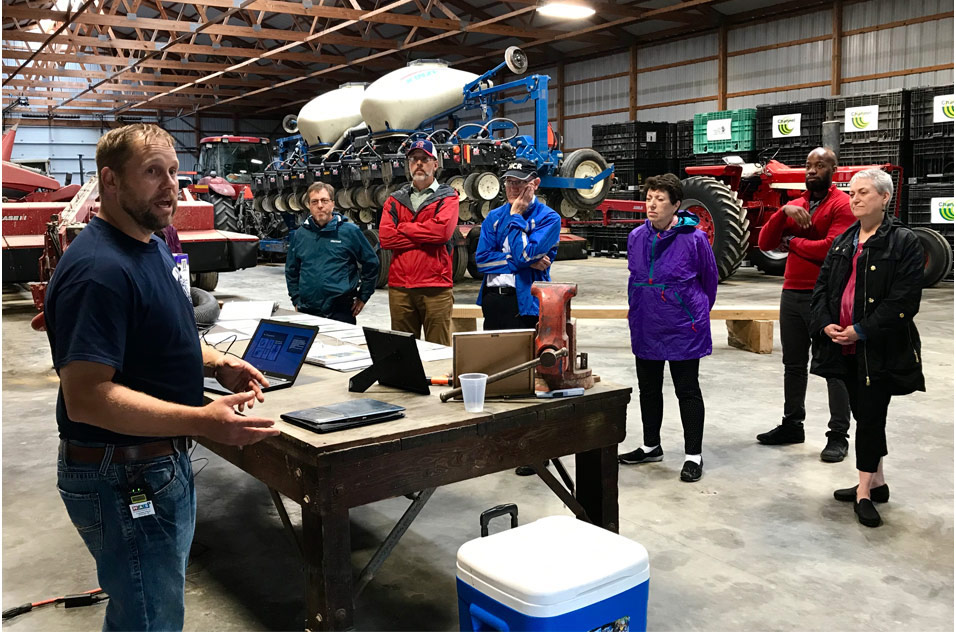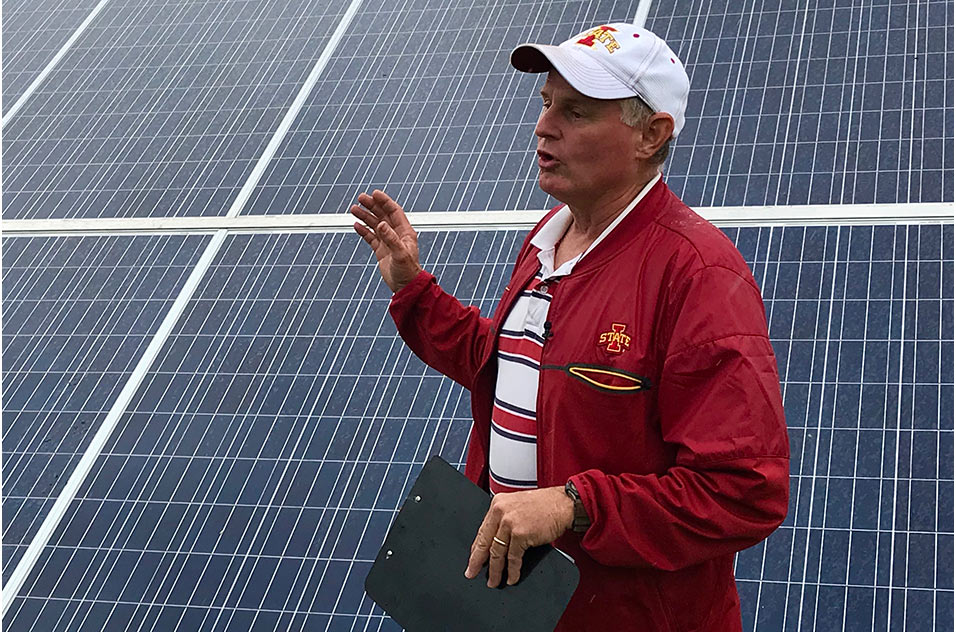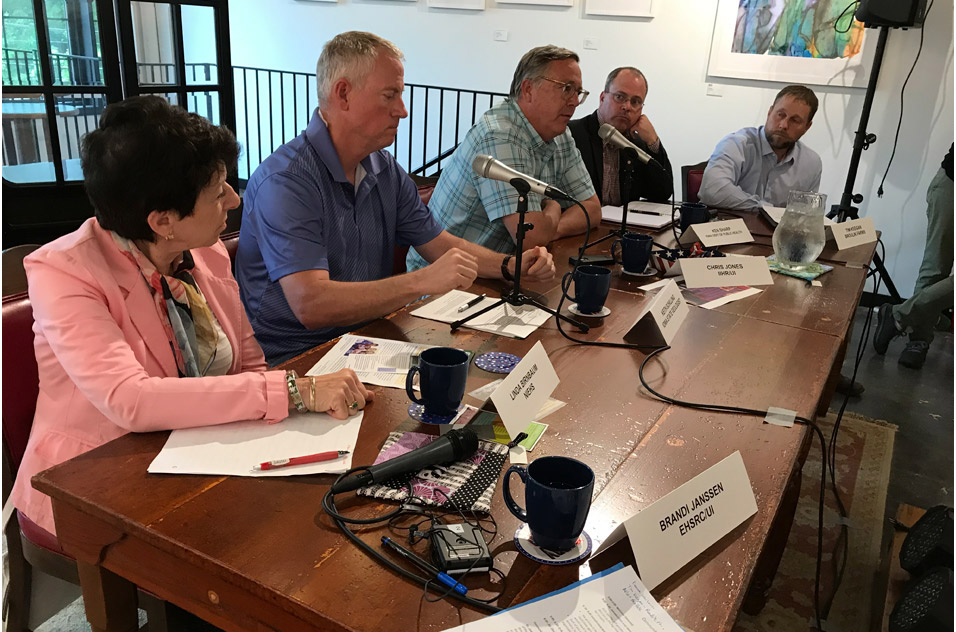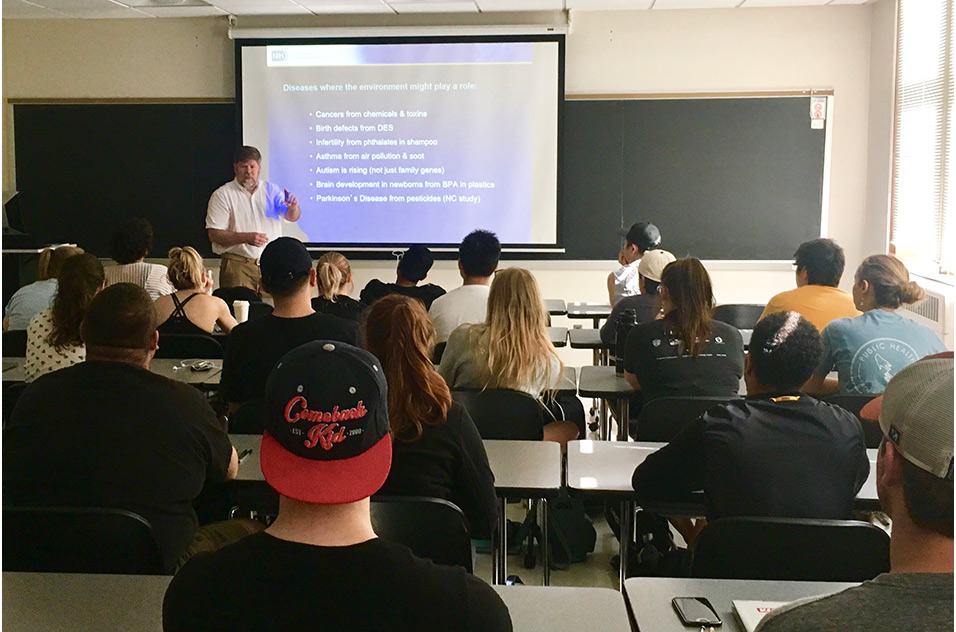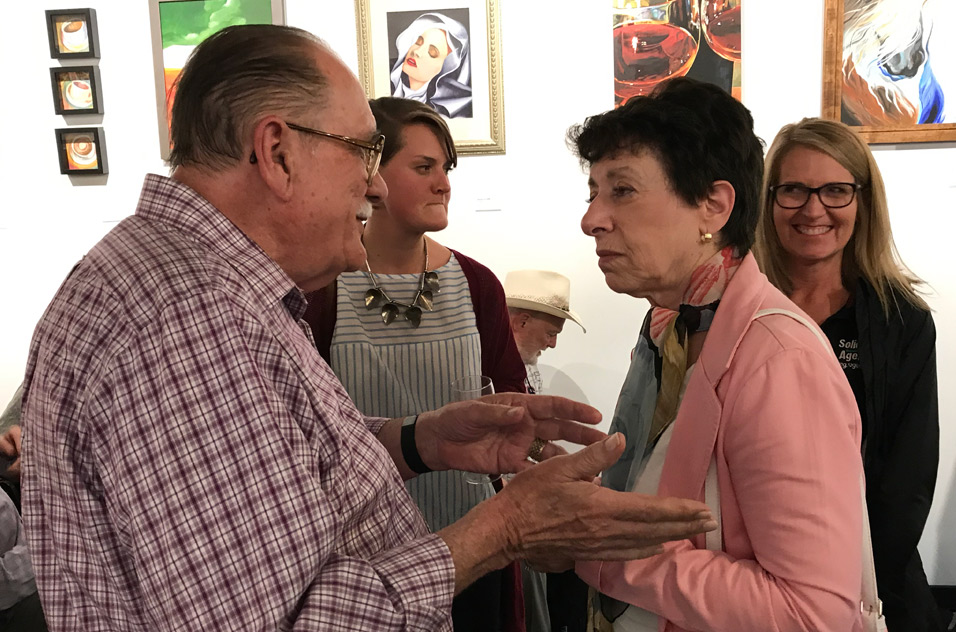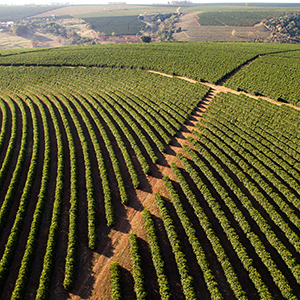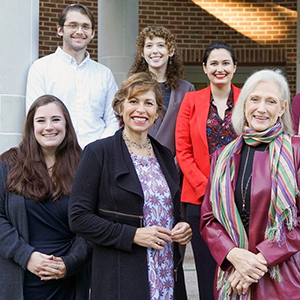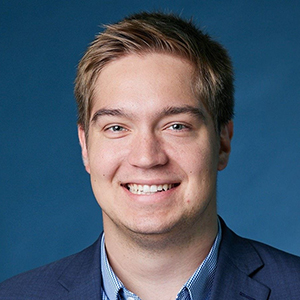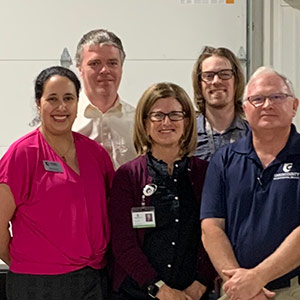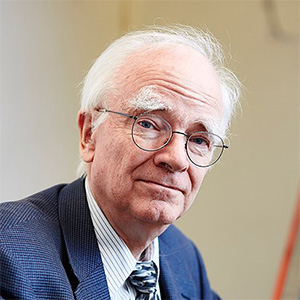Concerns about water quality took center stage in Mt. Vernon, Iowa June 19 when NIEHS and National Toxicology Program Director Linda Birnbaum, Ph.D., and others from the institute held a public meeting in the community.
The University of Iowa Environmental Health Science (EHS) Research Center sponsored the event, which included farm tours for NIEHS scientists, core center colleagues, and community members. The community forum was followed by a two-day meeting with EHS centers from around the country (see sidebar).
The center’s Community Engagement Core Director Brandi Janssen, Ph.D., moderated the community forum. Her group also planned the tour of three farms with different sizes, products, and practices, so the visitors could understand the varieties of local agricultural operations and the challenges faced by farmers in the region.
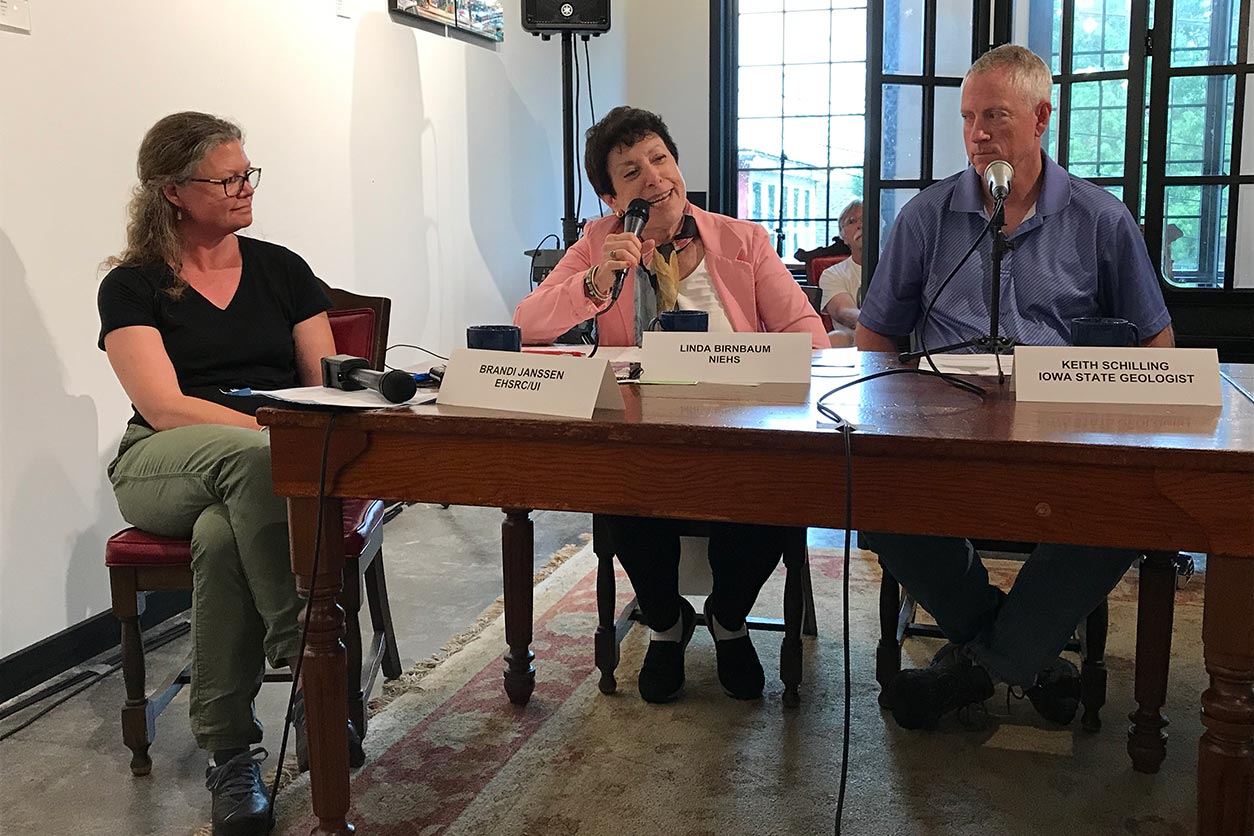 Janssen, left, was joined by Iowa State Geologist Schilling, right, Birnbaum, and others at Mt. Vernon Creates, site of the Iowa community forum. (Photo courtesy of John Schelp)
Janssen, left, was joined by Iowa State Geologist Schilling, right, Birnbaum, and others at Mt. Vernon Creates, site of the Iowa community forum. (Photo courtesy of John Schelp)A listening approach
At all her community forums, Birnbaum asks local organizers to select a key issue that becomes the focus of the visit. By listening to voices in urban and rural settings across the country, she learns about environmental health issues and how they may vary from one area to another.
“Dr. Birnbaum revved up the community engagement part of our center, and [all the] centers across the country,” said Jacqueline Curnick before the meeting. Curnick, who serves as coordinator of the Community Engagement Core, was quoted in a front-page story in the June 13 Mount Vernon-Lisbon Sun.
“Some of our best research is the result of strong community participation in the process,” said Birnbaum in her opening comments before a room full of government officials, town residents, farmers, and community group representatives.
 Both of Iowa’s senators sent staffers to the forum. Brittney Carroll, from Sen. Joni Ernst’s office, left, and Rochelle Fuller, from Sen. Chuck Grasley’s office, right, spoke with Birnbaum after the meeting. (Photo courtesy of John Schelp)
Both of Iowa’s senators sent staffers to the forum. Brittney Carroll, from Sen. Joni Ernst’s office, left, and Rochelle Fuller, from Sen. Chuck Grasley’s office, right, spoke with Birnbaum after the meeting. (Photo courtesy of John Schelp)Four panelists joined Janssen and Birnbaum to make brief remarks and take questions from attendees.
- Chris Jones, Ph.D., from the University of Iowa IIHR-Hydroscience and Engineering.
- Tim Keegan from Broulik Farms, which hosted Birnbaum and crew earlier in the day.
- Keith Schilling, Ph.D., Iowa state geologist.
- Ken Sharp, director of the Division of Acute Disease Prevention, Emergency Response, and Environmental Health at the Iowa Department of Public Health.
Well water unregulated
Water quality is of long-term interest in Iowa, reflected by the water quality research theme of the 25-year-old center. “Seventy percent of rural residents get their drinking water from private, unregulated water supplies whereas virtually all urban dwellers drink public water that is regulated and monitored,” states the center’s water quality research theme web page.
Among the resources the center offers is a link to an interactive map of Iowa private wells contaminated with nitrates, bacteria, or both, prepared by the Iowa Environmental Council and the Environmental Working Group. The center encourages well owners to test their drinking water.
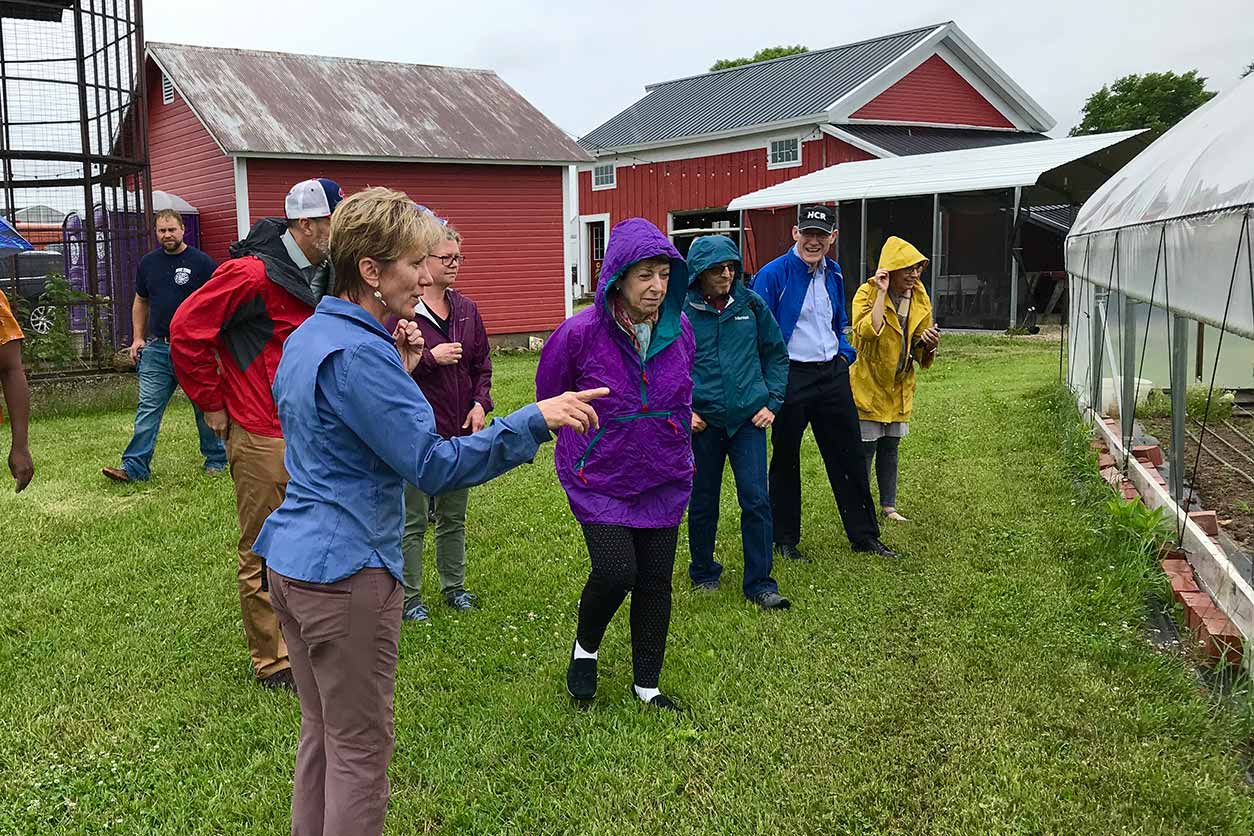 At Morning Glory farm, Donna Warhover, front left, described organic methods and employment of refugees and adults with disabilities. (Photo courtesy of John Schelp)
At Morning Glory farm, Donna Warhover, front left, described organic methods and employment of refugees and adults with disabilities. (Photo courtesy of John Schelp)Packed house
Local residents packed the room to raise questions about pesticide and fertilizer use, scale of operations, runoff, cancer, and other topics. For example, on many farms, underground pipes collect excess rainwater and drain it from the fields so machinery can operate. “You can be a good farmer and still have nitrites coming out [of your drain pipe],” Jones noted. Nitrites result from fertilizer use.
Another concern was loss of topsoil, which may lead to increased use of agricultural chemicals. “Drive across the state and you see orange soil hilltops and rich black soil down by the streams,” said Schilling. “So yes, we’ve moved soil down the hill.” The orange soil refers to layers that underlie the rich topsoil.
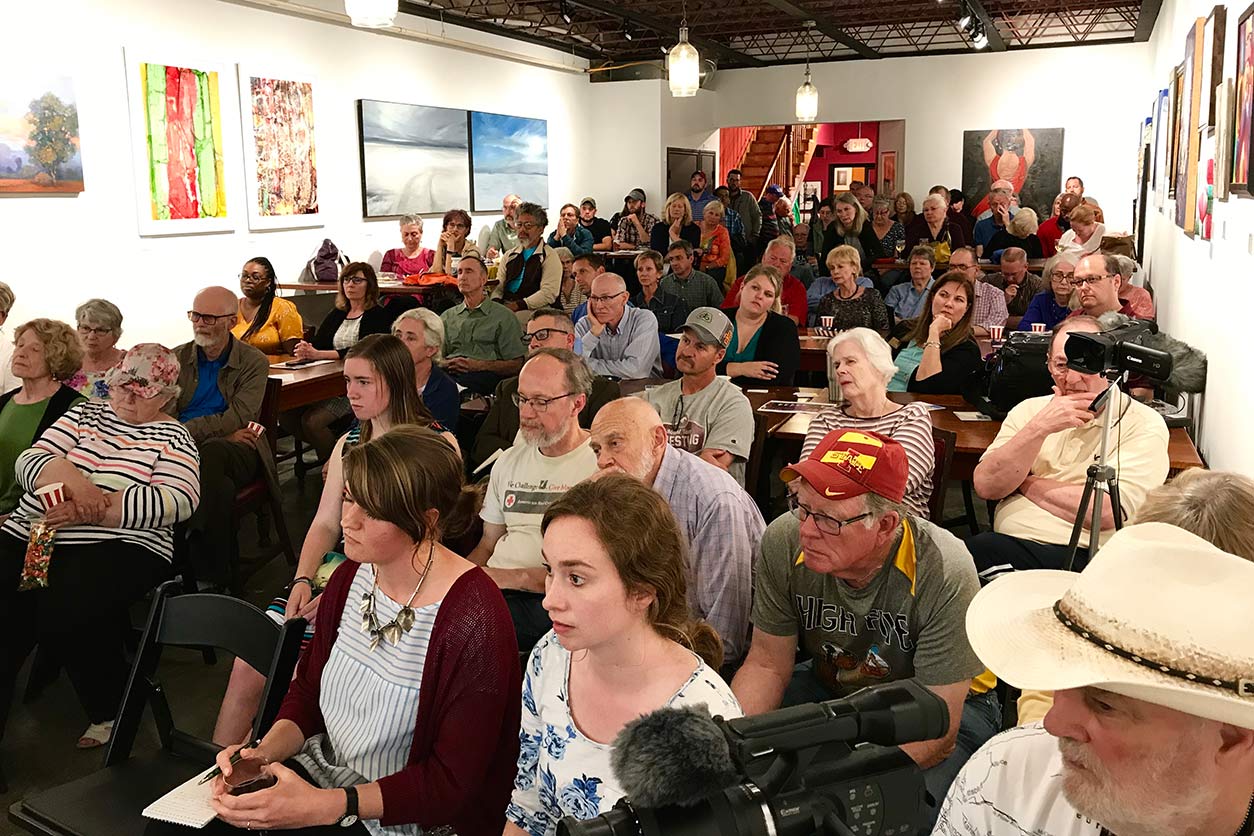 Attendees raised concerns such as pesticides, nitrites, and loss of topsoil, which affect quality of water both at the surface and underground. (Photo courtesy of John Schelp)
Attendees raised concerns such as pesticides, nitrites, and loss of topsoil, which affect quality of water both at the surface and underground. (Photo courtesy of John Schelp)Birnbaum answered a question about potential clusters of cancer cases. “New techniques are being developed using big data to better understand cancer areas,” she said.
At the end of the evening, Birnbaum was interviewed for a video that the center will produce. According to John Schelp, from the NIEHS Office of Science Education and Diversity, the product will be similar to a video produced by the University of California at Davis (UCD) after last year’s forum in California’s San Joaquin Valley (see sidebar).
Schelp noted that this was the last of Birnbaum’s 25 community forums because of her upcoming retirement. “These community forums are part of Dr. Birnbaum’s legacy,” he said. “She’s visited neighborhoods from Harlem to Marin County, from Seattle to the Gulf of Mexico, and from San Juan [Puerto Rico] to St. Lawrence Island [Alaska].”





